UPDATED: Criterion has posted a video of locations then and now. See below.
One of the greatest comedies of all time has finally arrived it the special edition that it has so longingly deserved. Stanley Kramer’s It’s A Mad, Mad, Mad, Mad, World with one of the largest cast ever assembled on the big screen. It was billed as the comedy to end all comedies. Stanley Kramer was known for directing great drama films such as Judgement At Nuremberg, Inherit the Wind, and On the Beach. The story goes that a film critic bet Kramer that he couldn’t do a comedy and that is why he decided to do the film. Written by William and Tania Rose was originally conceived as a comic chase through Scotland. The script was sent to Kramer and the location was changed to America.
The plot of the film is, With this all-star Cinerama epic, producer/director Stanley Kramer vowed to make “the comedy that would end all comedies.” The story begins during a massive traffic jam, caused by reckless driver Smiler Grogan (Jimmy Durante), who, before (literally) kicking the bucket, cryptically tells the assembled drivers that he’s buried a fortune in stolen loot, “under the Big W.” The various motorists setting out on a mad scramble include a dentist (Sid Caesar) and his wife (Edie Adams); a henpecked husband (Milton Berle) accompanied by his mother-in-law (Ethel Merman) and his beatnik brother-in-law (Dick Shawn); a pair of comedy writers (Buddy Hackett and Mickey Rooney); and a variety of assorted nuts including a slow-wit (Jonathan Winters), a wheeler-dealer (Phil Silvers), and a pair of covetous cab drivers (Peter Falk and Eddie “Rochester” Anderson). Monitoring every move that the fortune hunters make is a scrupulously honest police detective (Spencer Tracy). Virtually every lead, supporting, and bit part in the picture is filled by a well-known comic actor: with an all-star lineup also includes Carl Reiner, Terry-Thomas, Arnold Stang, Buster Keaton, Jack Benny, Jerry Lewis, and The Three Stooges, who get one of the picture’s biggest laughs by standing stock still and uttering not a word.
This is probably one of my favorite comedies of all time. It’s one of those few films that you can watch multiple times and always seem to find new things with it. The script is really tight and while the film is long by today standards, it really is the perfect length. The smart thing that the script dose is carefully introduces us to the main cast with the scene where they are deciding how to split the money up. And while the action scenes really steal the show, its the characters that ground the film and make it work so well. This film is what defines the term “lightning in a bottle” because the main cast in the film is simply amazing. There were both established and newcomers in the cast but, I have to admit that Jonathan Winter pretty much steals the movie for me. Only a director like Kramer could keep this film from flying off the rails. It is mind-boggling how he was able to keep everything going considering that the film was shot for over eight months. There is and will never be a film like this ever. First there not the talent base today of actors that could even begin to touch this cast. The time and which this film was made this cast had to bring it’s A+ game. Then they had to keep up with the other cast members. Second the budget today would be astronomical and no studio could afford to do it. Even though the film was made in 1963 it’s a very timeless film. Kramer was very smart in not identifying any current events of the time in the film. While clothing,cars and locations are of their time the story is not. Not only is the film funny but has some of the most amazing stunts ever put on film. To this day I am shocked that no one died doing some of those stunts especially the plane stunts during the Hackett and Rooney sequence. It just doesn’t get much better than this film.
There was a preview version of the film that had a running time of 210 minutes. This was later cut down for the Cinerama roadshow version that ran 192 minutes. Then the regular theatrical version that had a running time of 161 minutes. The roadshow version played in theaters that showed Cinerama but the film was shot on Ultra Panavision 70 that uses 60mm film stock. Cinerama was a process that used 3 cameras to record the film. There are only eight films that were shot in the 3 strip process. The 70mm print had 6-track stereo while the general release only had 4-track stereo. The theatrical aspect ratio of the film was 2.76 to 1
The new Criterion Blu-Ray has two versions of the film. First is the general release version that runs 161 minutes with 5.1 DTS-MA. The video is a new 4K digital mastering of the film. In comparing this new version to the previous MGM Blu-Ray release it seems that the source film elements are the same with Criterion doing a new mastering of it. I will say the colors are a bit better on the Criterion version and the picture is a little bit sharper but the difference is not too big. The 5.1 DTS-MA is pretty much the same between the two. So while the theatrical presentation is a slight upgrade from the previous Blu-Ray edition the second Blu-Ray disc is where the real treat of the Criterion release is. It contains a 197 restored version of the Roadshow version. While the roadshow version ran 192 minutes there are a few scenes that were excised from the preview version that have been restored to this new version. There are new scenes that there appears to be no existing footage but there is audio and stills that have been restored to this version. For the first time this is the closest to the roadshow version or the preview version that has ever been released on home video. The picture quality does vary on this edition depending on the quality of the source material used. Because there were many different elements used there are some times missing audio and subtitles appear on the screen to complete the dialog. The good news is that the audio for this version is quite good. Criterion has thankfully included the police report audio that played during the intermission during the original roadshow presentation. It started playing after the intermission and before the ‘Entr’acte’ the theater would play this audio that described what each group was doing from where they were left off in the picture before the intermission. I was lucky enough to see a screening a number of years ago at the Hollywood Cinerama Dome and they played this audio during the intermission.
The special features for the Blu-Ray are:
- New audio commentary featuring It’s a Mad, Mad, Mad, Mad World aficionados Mark Evanier, Michael Schlesinger, and Paul Scrabo
- New documentary “Sound and Vision” on the film’s visual and sound effects, featuring interviews with visual-effects specialist Craig Barron and sound designer Ben Burtt
- Excerpt from a 1974 talk show “Stanley Kramer’s Reunion with the Great Comedy Artist’s of our Time” hosted by director Stanley Kramer and featuring Mad World actors Sid Caesar, Buddy Hackett, and Jonathan Winters
- Press interview from 1963 featuring Kramer and cast members
- Excerpts about the influence of the film from the 2000 AFI program 100 Years . . . 100 Laughs
- Two-part 1963 episode of the TV program Telescope. Part one “A Winters Tale” and Part Two “Junket into Madness” that follows the film’s press junket and premiere
- The Last 70mm Film Festival, a 2012 program featuring Mad World cast and crew, hosted by actor Billy Crystal
- Selection of humorist and voice-over artist Stan Freberg’s original TV and radio ads for the film, with a new introduction by Freberg
- Trailers and radio spots
- Restoration Demonstration that shows how the longer version of the film was restored
- PLUS: A booklet featuring an essay by film critic Lou Lumenick and new illustrations by legendary cartoonist Jack Davis, along with a map of the shooting locations by artist Dave Woodman
The only thing that is missing is the documentary from the MGM Blu-Ray Something a Little Less Serious: A Tribute to It’s A Mad, Mad, Mad, Mad, World that runs 1:01:21 so make sure that you hang on to the disc so you can have all of the special features ever created for the film. (The below image was via DVD Beaver because my review copy was not a release version. I did not have access to the final package at press time)
I suggest you watch the theatrical version first to get yourself familiar with the film. Then watch the longer version with the commentary first. This is probably one of the best historical commentaries ever recorded. Evanier, Schlesinger and Scrabo are not only exceptionally informative about the film and how it was made but, you can also feel their love for the film as fans. There are so many thing that you will learn from this commentary that it’s like watching the film for the first time. They also set the record straight on a lot of myths about the film. Commentaries are rarely this good. The Sound and Vision with Barron and Burtt give great insight on both the visual effects but the great sound that the film had for it’s time. The excerpt from the 1974 talk show is quite fascinating to see Kramer interview some of his cast from the film. It feels more like a conversation at his home with guest and they filmed it. The 1963 press interviews are interesting because the reporters questions are not recorded so that it they could sent this to multiple outlets and the stations could add there audio to make it seem as if they were directly asking the question. The excerpt from the AFI program are good but it’s really hard to believe that it was number 40 on the list. It should have at the very least been in the top 10. The two-part Canadian Telescope that follows Jonathan Winters and then films the press junket has to be pretty rare for the time because most publicity was still somewhat controlled by the studios. It’s pretty sad watching the Last 70mm Film Festival because a number of people who were there have now passed away. But thankfully it was recorded so we are able to hear from the people who were there when the film was made. The Stan Freberg ads for the film are very ingenious for their time. They were filmed during the production and the actors when they were not filming headed over to the studio to make ads for the film. Kramer was a fan of Freberg and after seeing the ads you understand why he was. From 1963 there are 6 radio ads and 4 television ads from Freberg. There is also the original roadshow teaser and the general release trailer. For the 1970 re-release there are 3 radio ads and a theatrical trailer. Probably one of the most fascinating special features is the Restoration Demonstration that show how they put together the restored version of the film and how challenging it was. It also show the care that was put into it to make it the best possible version with the available elements.
The only thing that I feel could have made this the perfect edition is if there was a commentary on the theatrical edition of the film with any of the surviving cast or crew to give insight. There are a lot of interview with both the cast and crew on both this and the previous MGM edition but I just feel that when you record a commentary that a lot of times you get very spontaneous things that people remember while they are watching it. While it’s possible that Criterion might have tried to do this it might have not been feasible due to the age and timing of those who might be able to do it. This is not a knock on the amazing work that they have done on the title, just more of a wish.
United Artists hired legendary artist Jack Davis to the artwork for the posters. Davis had done movie poster before but this was a career changer for him also. In 2011 Fantagraphics Groth interviewed Davis about the artwork and he said, Jack Davis became the go to guy, the most in-demand artist of comedy film posters throughout the sixties and seventies, arguably the most successful and popular film poster artist of all time, and undoubtedly, the master of the chaotic, over- crowded crowd scene. The film has also had an afterlife for Jack Davis. He’d create several variations of the poster over the years, as well as the wraparound art for the LP album, and several other fun spinoffs. You can see why the artwork was so influential.
Even the Simpsons paid homage to the film in the episode in the fifth season episode “Homer the Vigilante”
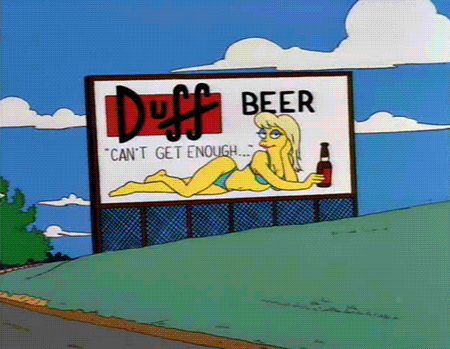
Even if you own the Laserdisc, DVD and or the MGM Blu-Ray versions the new Criterion is truly a must have for any collection. The quality is the best the film has ever looked and with the closest restored version to the roadshow and the wealth of new supplementary material it’s one of the few time that spending the money on a fourth version of the film is well worth it. This will be one of the best releases this year and considering that it’s only January that’s saying a lot about this edition. I give it my Highest Recommendation!

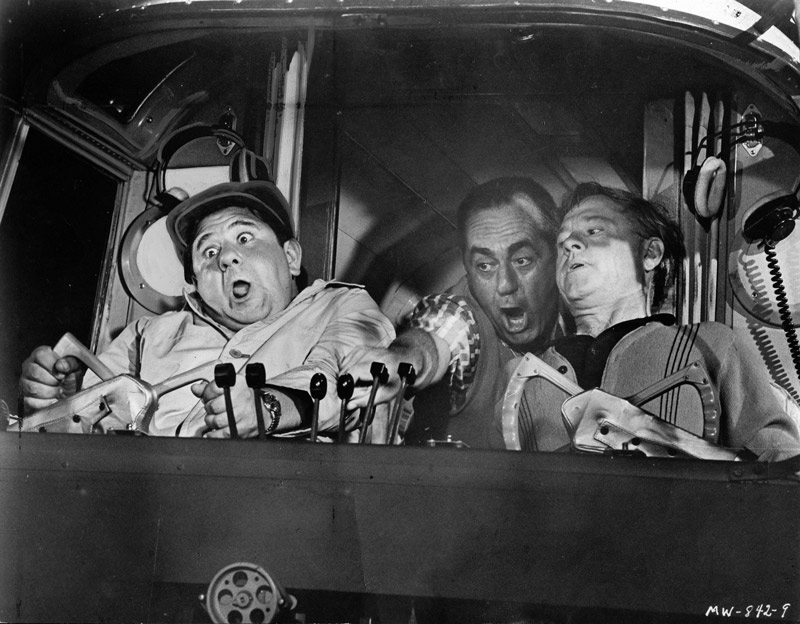
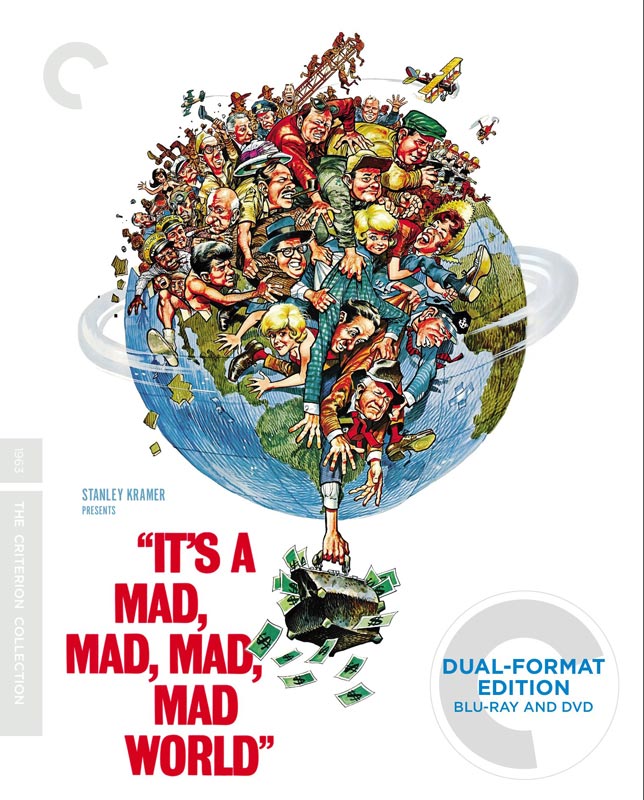
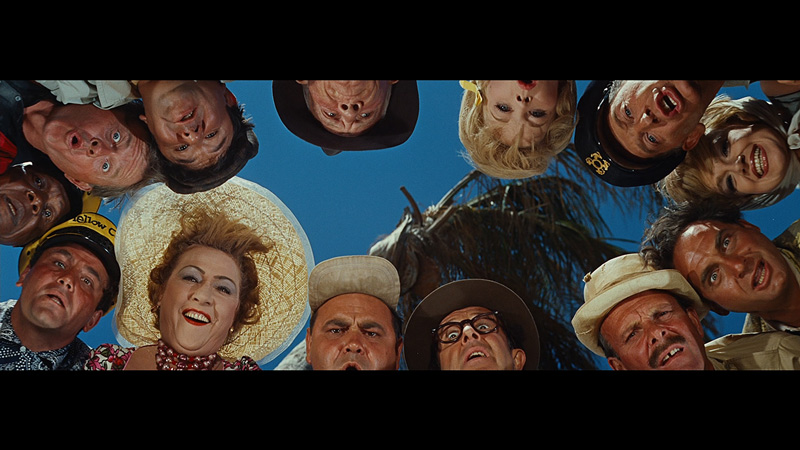
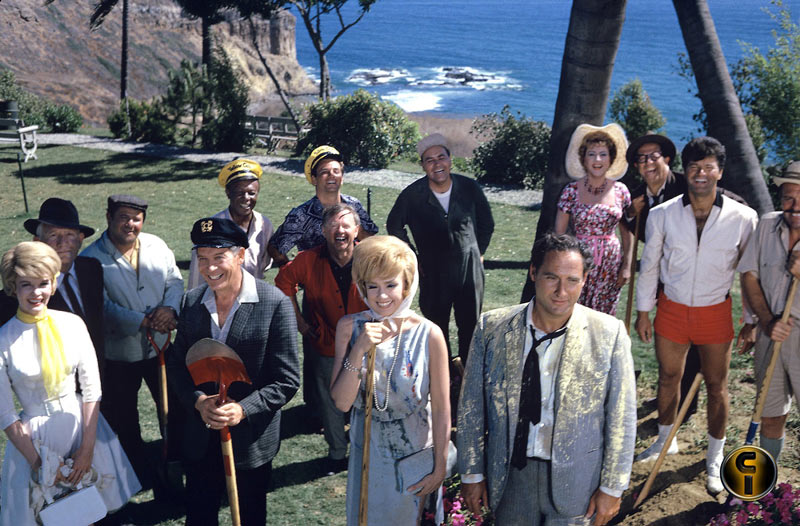
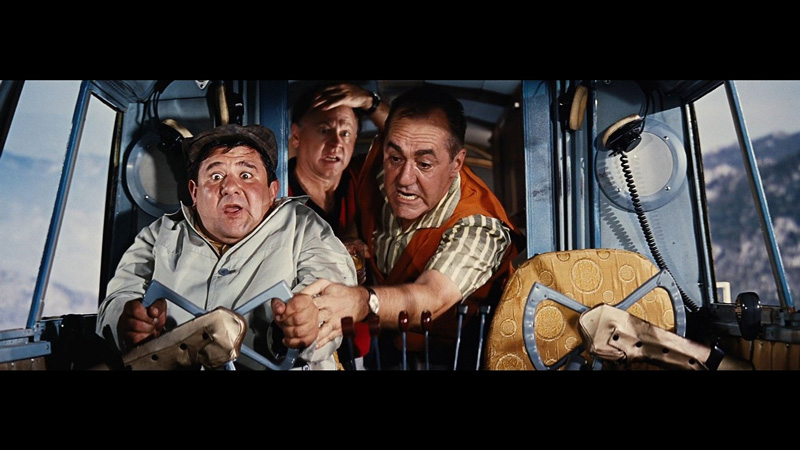
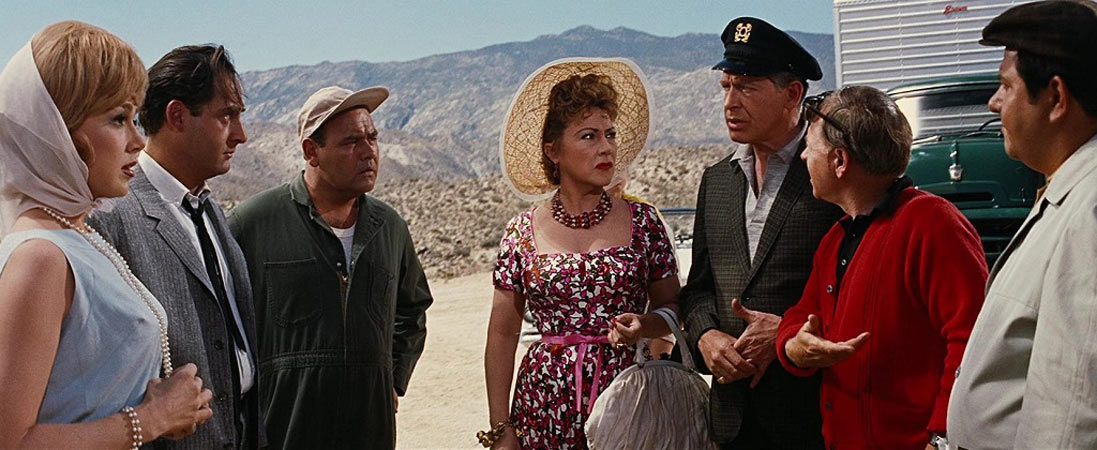
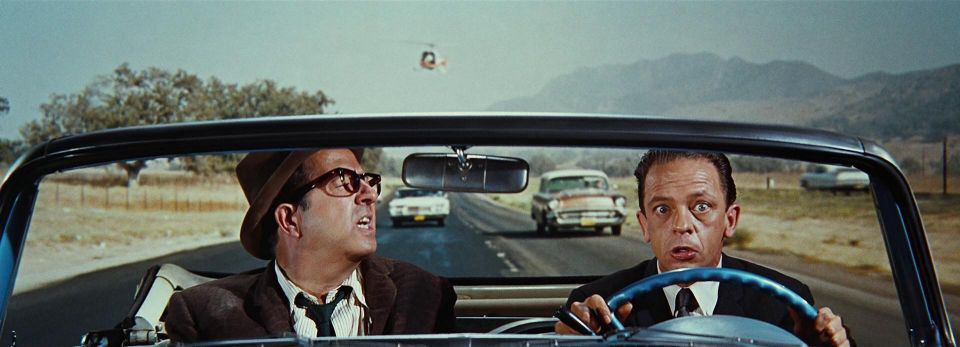
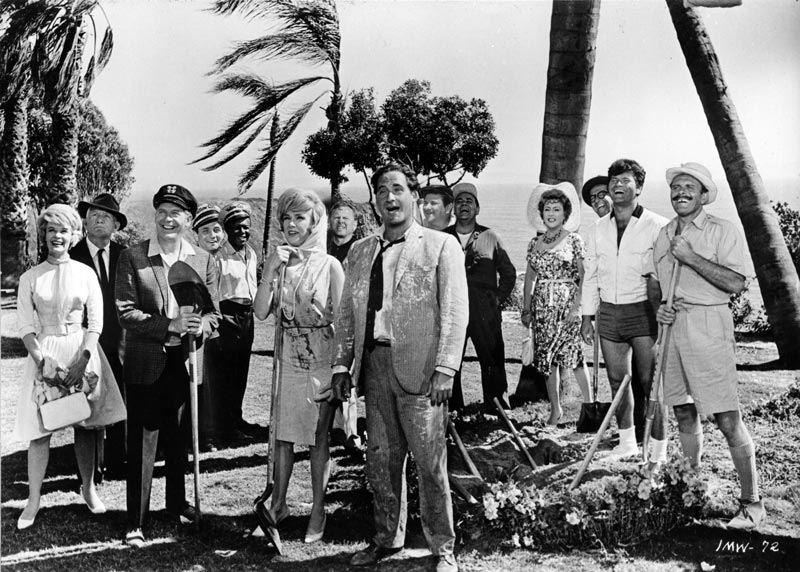
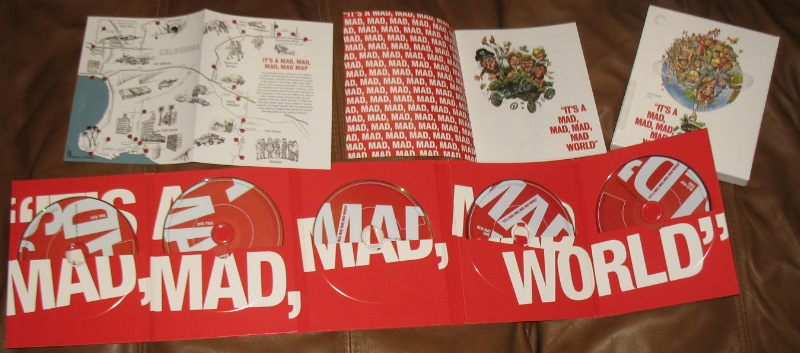
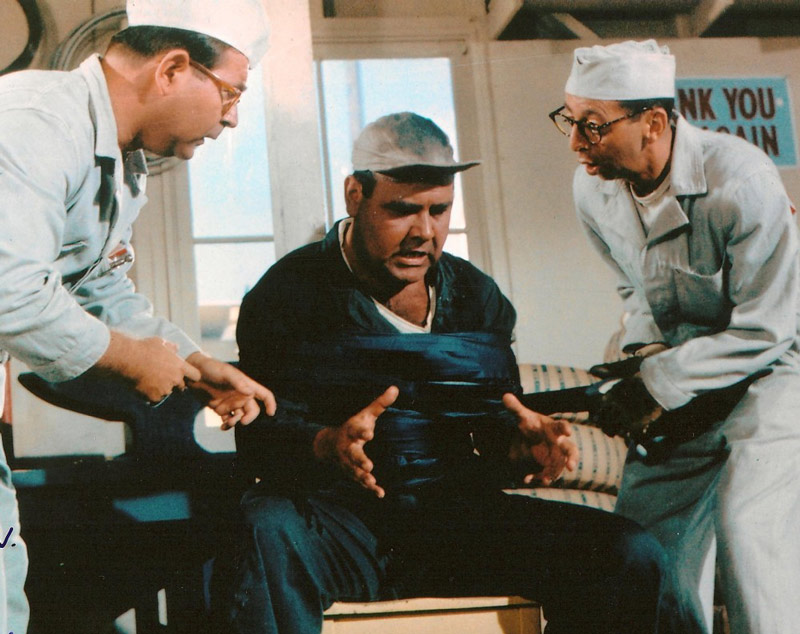
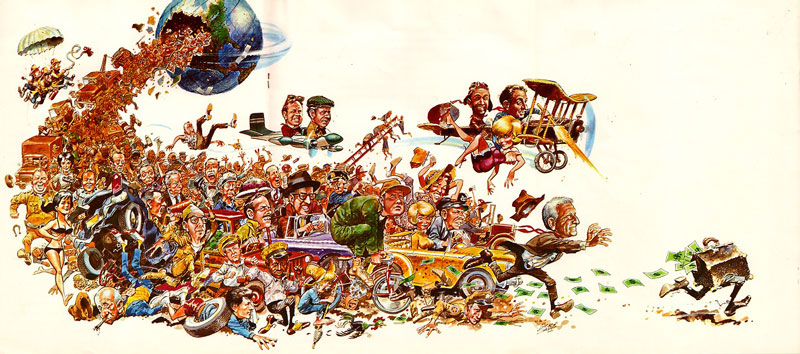
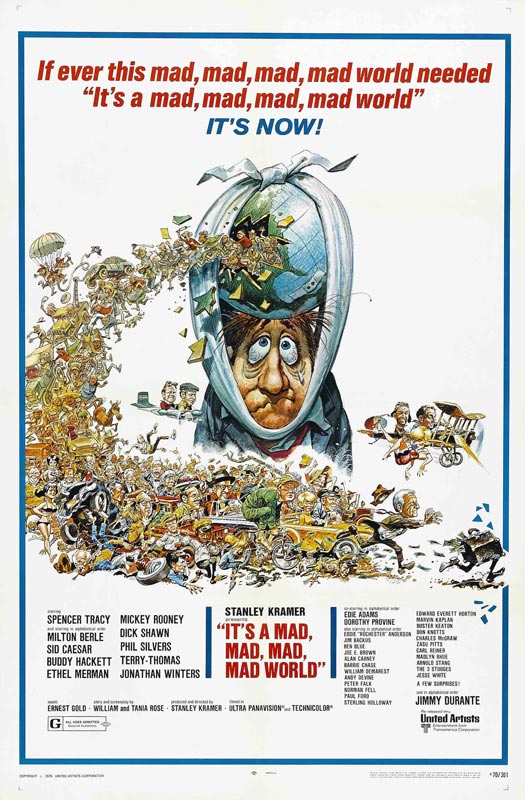
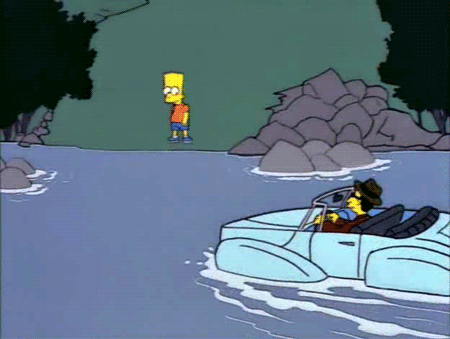
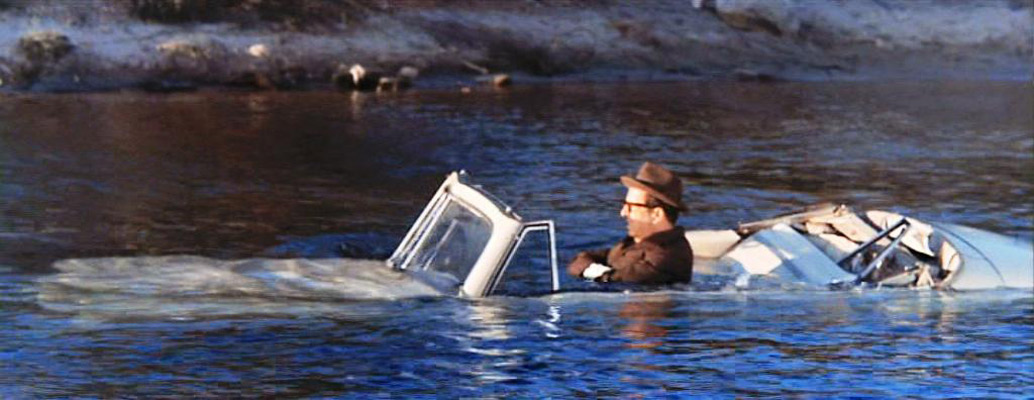
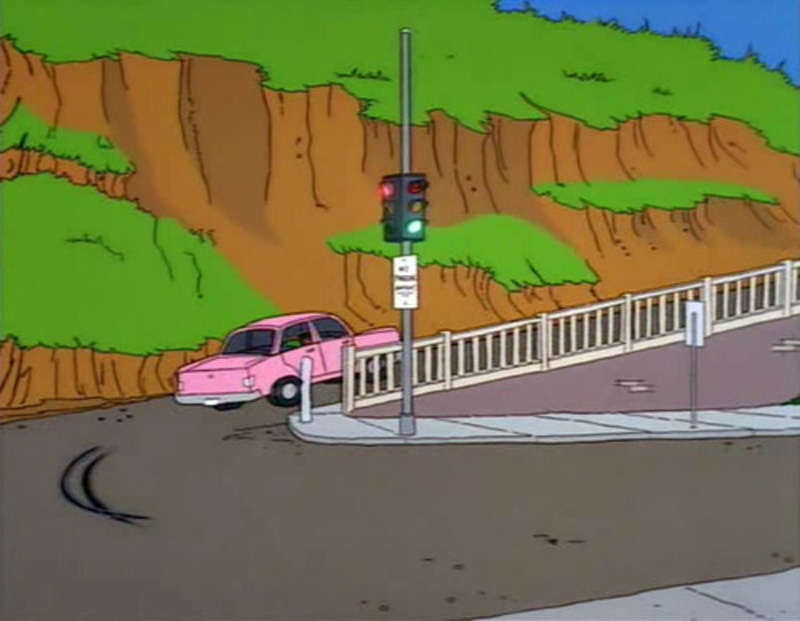
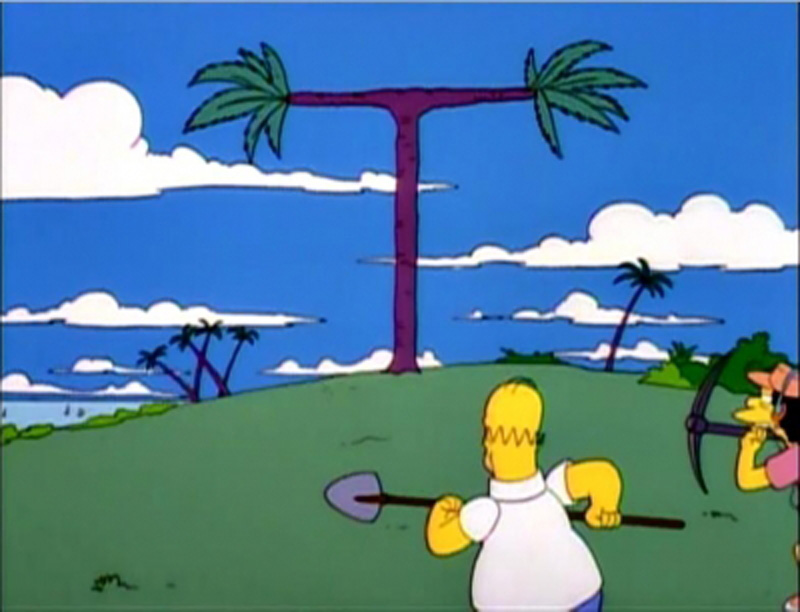
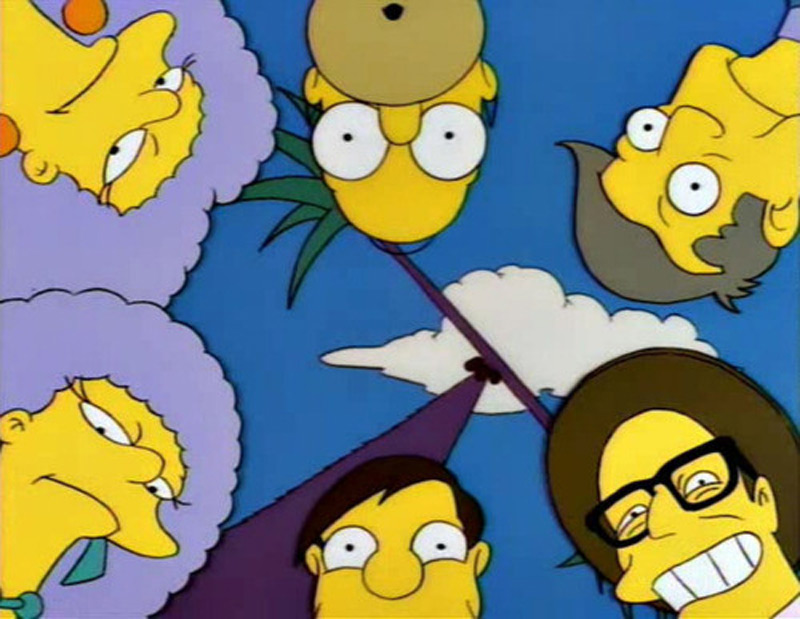
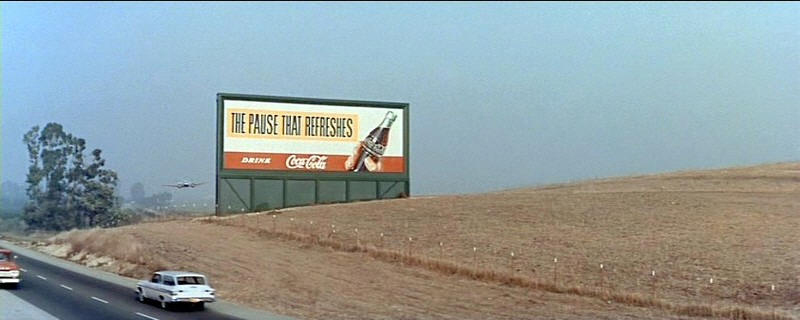

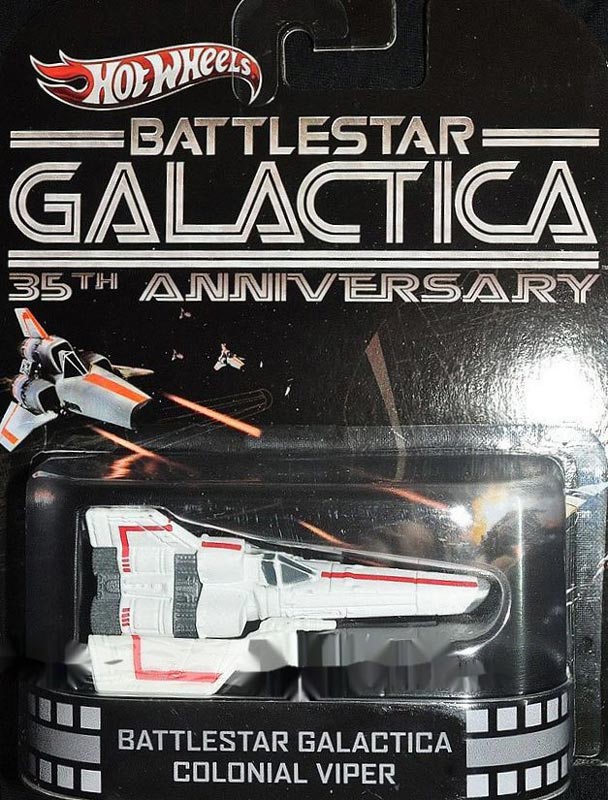
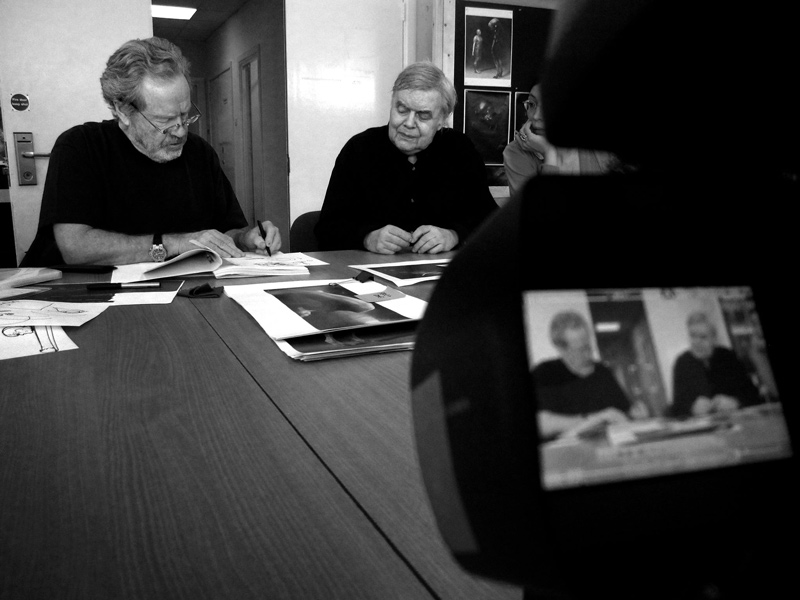
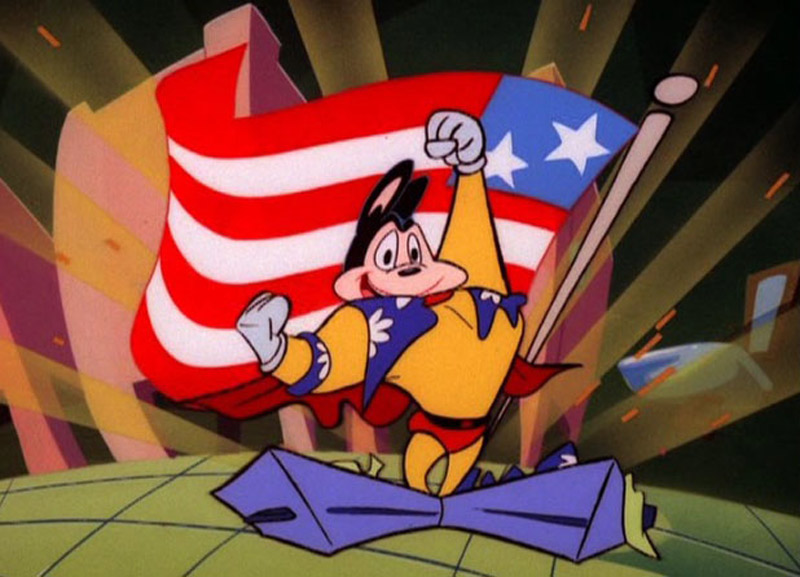
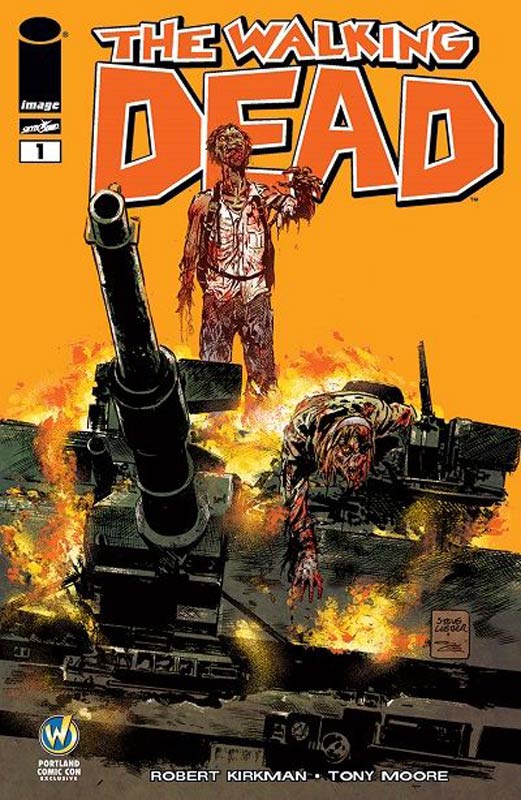
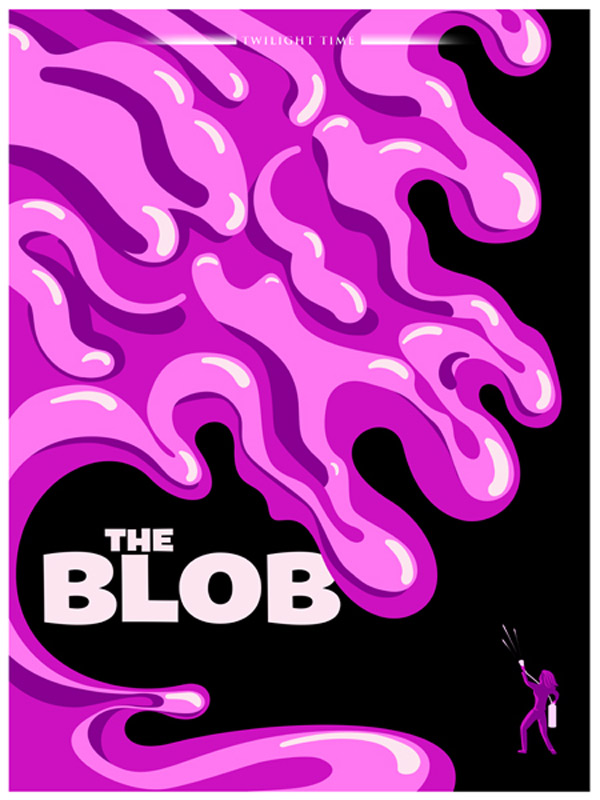
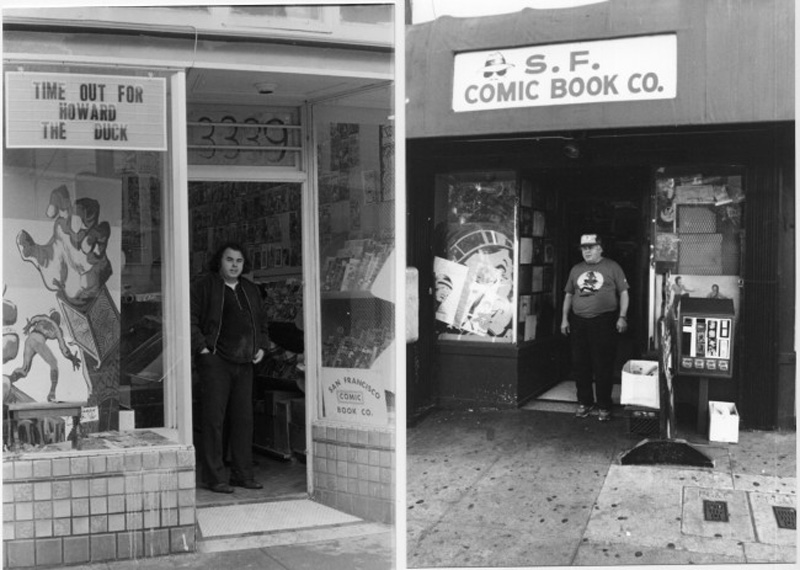
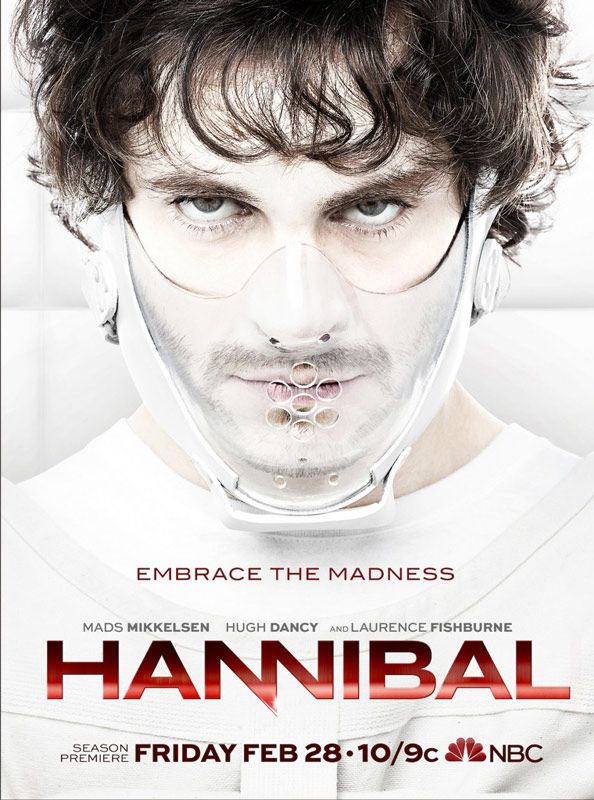





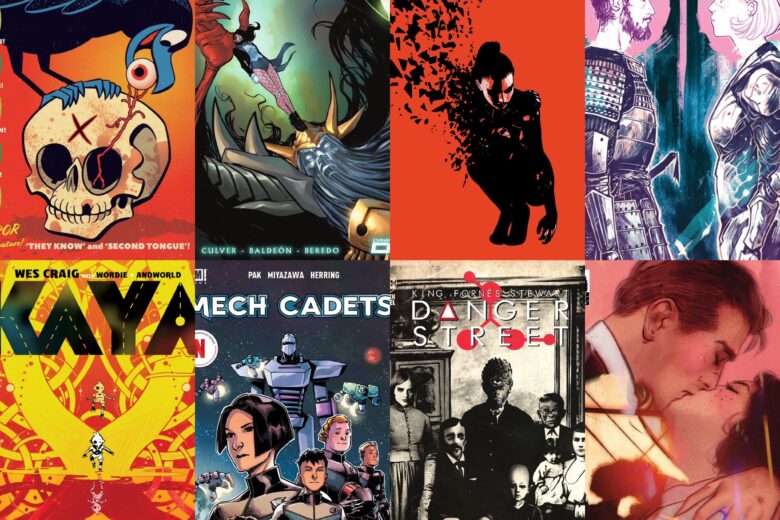
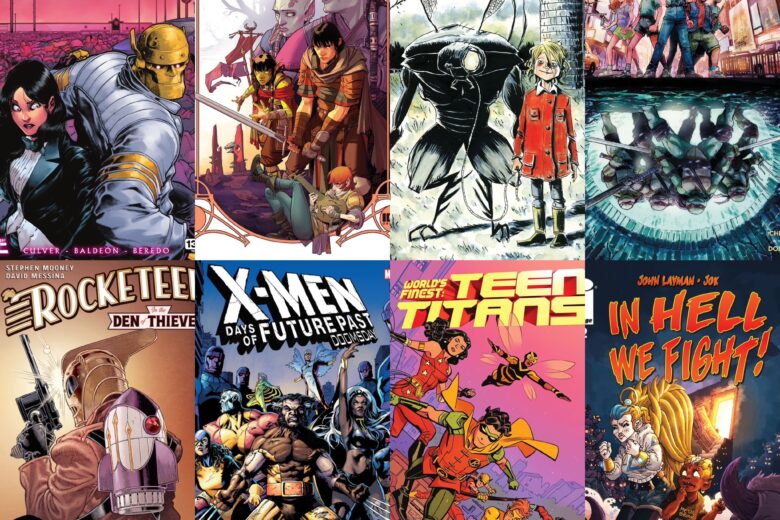
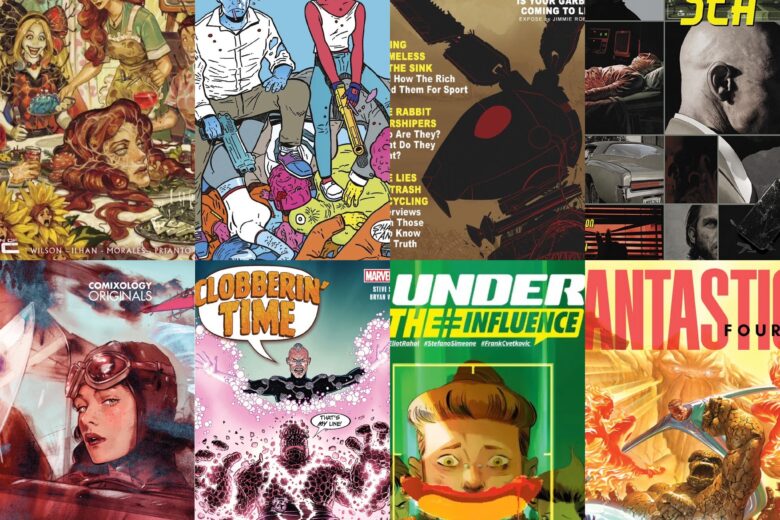
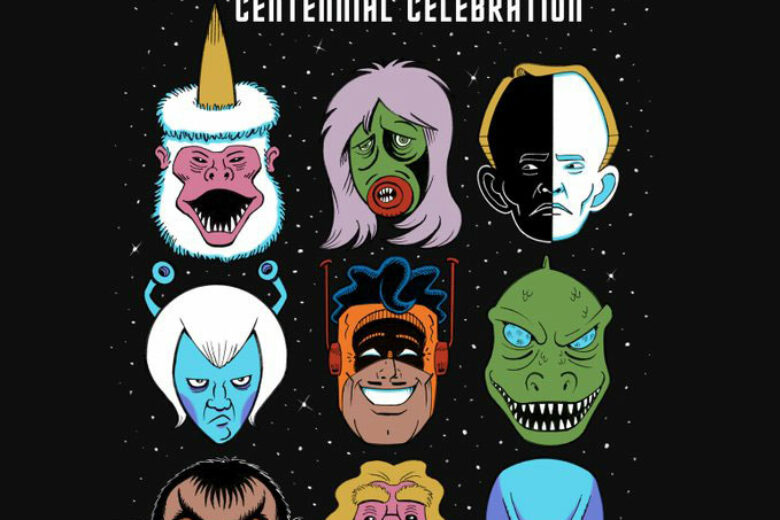
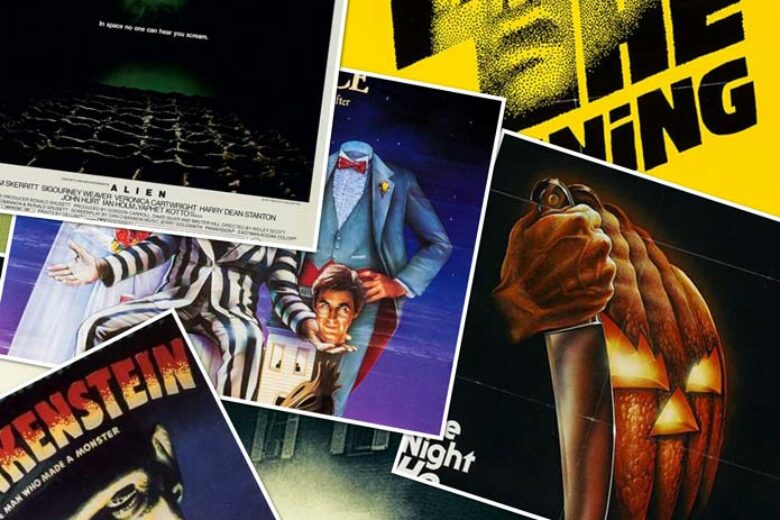
1 Comment
Thank you so much for your nice remarks about the commentary. We decided that it was best not to spend much time on any cast and crew bio that a fan could easily find. We concentrated mostly on little known things. It was an honor to be involved. thanks again!